Healthcare is an extremely regulated industry. Programs like Medicaid and Medicare face tough scrutiny from regulators intent on stopping abuse and fraud.
Organizations found guilty of fraudulent activity face harsh penalties, even though the regulations and laws in place are complex and difficult to comprehend. Knowing what the fraud finders are looking for could help avoid the consequences handed down for non-compliance.
1. Individually billed services
Auditors are quick to find providers who choose to bill for services individually rather than as a bundle. Bundling for services, whether procedures, treatments or office visits, often costs less than charging as separate services. When “unbundling” occurs regularly, it could send a red flag to the regulators.
2. Services not performed
Should a provider submit a bill for services not rendered, both the patients and the audit office could notice. Billing for supplies not used or needed falls into a similar category, and high-volume practices receive additional scrutiny in these areas.
3. Double billing
Sending a bill twice sends a message of fraudulent activity. Double billing could be both the federal and private insurance company receiving the bill or when the benefits program receives a second bill for services or supplies.
4. Increased or excessive billing rates
High-volume billing practices receive attention for billing services that show patterns with higher-than-average industry rates or routine “add-on” treatments for a large number of patients. Unnecessary charges could include equipment not needed or labor hours involved.
The investigators for healthcare fraud are meticulous and relentless. Insignificant missteps can lead to more serious exposure with noncompliance and concerns of fraud.

